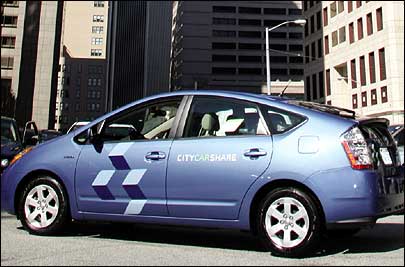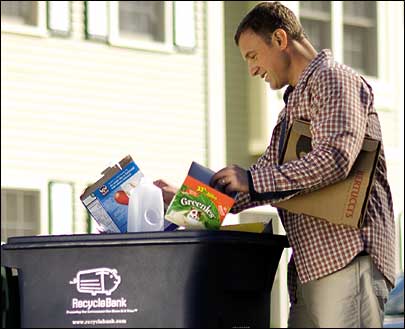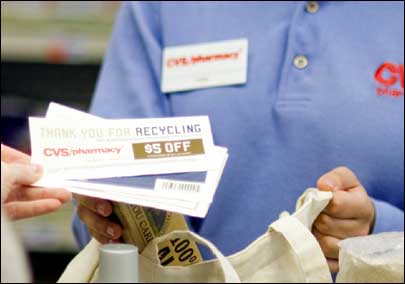Radio frequency identification technology, originally designed for product tracking, now promises to help people live and work in a cleaner and healthier environment. An array of test projects and field deployments are beginning to show that RFID can benefit business operations—by creating efficiencies, improving quality control and strengthening security—while simultaneously helping the environment—by cutting materials waste, reducing vehicle exhaust and boosting recycling. Other projects are using the technology in a green way, such as harnessing solar power to operate RFID systems.
RFID’s potential to help both the environment and the bottom line seems almost limitless. Some RFID applications include the tagging and tracking of endangered species to determine how environmental changes are affecting their habitats. Others involve the remote monitoring of pest infestations to limit the use of environmentally harmful chemicals to defined hot spots.
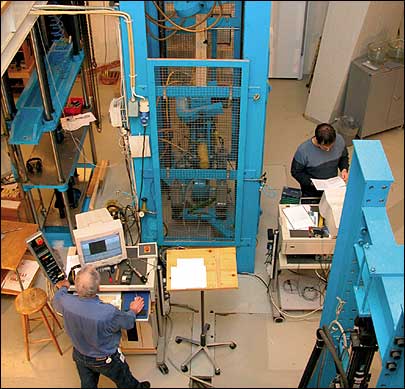
RFID pioneer Wal-Mart believes the technology can improve the environmental health of the world as well as the financial health of the company and its suppliers. “What’s good for the planet is good for business,” said Wal-Mart CIO Rollin Ford at last year’s RFID Journal LIVE! conference and exhibition. “Using RFID to locate errors, get to root causes and achieve accurate forecasts leads to efficiency, which leads to sustainability.”
The giant retailer remains committed to RFID’s green potential. Wal-Mart spokesperson John Simley explains how the technology can, for example, lower both the financial and the environmental costs of wasted produce: “The energy that’s invested in a perishable item includes growing, harvesting, preparing, packaging, shipping, refrigerating, holding and displaying it. If it doesn’t arrive on time, or if it perishes on the way to the store, it becomes a complete waste—not just of the product, but of all the energy invested along the way.”
Jean-Pierre Emond, codirector of the University of Florida Research Center for Food Distribution and Retailing, expresses the same point of view, noting that “a significant amount of energy, for example, is spent every year to keep perishable products at the correct temperature during distribution.” RFID-driven temperature and humidity monitors mounted in trailers and warehouses can help keep food fresher longer. “RFID can significantly contribute to this effort,” Emond says.
ZigBee, a related radio technology, is being used to monitor and control energy consumption. Toronto-based Riga Development, for example, has created a ZigBee-powered network that can help the managers of hotels and other large buildings slash energy costs by up to 40 percent. The WiSuite system automatically self-configures into a wireless mesh network of “WiStat” digital thermostats, appliances and receivers installed throughout a building. The WiStats and related appliance controls monitor the rooms’ environments, providing a comfortable experience for occupants while reducing energy use in unoccupied rooms and alerting staff to potential problems.
“We’re just at the beginning,” says Ann Grackin, managing director of global risk intelligence supply-chain consulting at Marsh, an international insurance broker and strategic risk adviser headquartered in Boston. “Such projects will provide ROI incentive and get businesses to cross the green divide.”
Tree Tagging
Gunnar Niblaeus isn’t the type of fellow most people would call a tree hugger. In fact, he spends much of his working time thinking about the best ways to cut down forests. As project leader of Indisputable Key, an RFID research project funded by the European Commission, Niblaeus wants to optimize forest production and the use of wood throughout the supply chain while minimizing environmental damage. “The term mostly used today,” he says, “is ‘sustainable forest management.'”
Project officials estimate that wood product mismanagement accounts for up 25 million cubic feet of materials each year, worth several billion euros. RFID can help wood manufacturers gain greater supply-chain insight and improved quality control by giving them the ability to accurately track wood products, such as boards, planks, beams and window frames.
“In general, people think of RFID in terms of the supply chain,” says Marlin H. Mickle, executive director of the University of Pittsburgh’s RFID Center of Excellence. But Mickle points out that a reverse supply chain also exists. “In many cases, when there’s something wrong with a product, you can use RFID to figure out where it came from.” That’s the job the Indisputable Key project is designed to accomplish—giving wood product customers a way to trace a specific piece of wood all the way back to its source. “You could, for instance, read the tags and see these [lumber products] did not come from the rain forest, and came [instead] from a legitimate company,” says Marsh’s Grackin.
Indisputable Key tags individual logs at the time they are harvested. Niblaeus says RFID works better than many simpler and cheaper methods, such as bar codes, because of the depth of information the wireless technology provides, as well as its resistance to moisture and other environmental factors. For added durability, project researchers are currently working on a tag that’s created from a wood by-product. “These tags, or transponders, should also be biodegradable,” Niblaeus says.
The software side of Indisputable Key’s technology is based on the Individual Associated Data (IAD) concept, which will enable the automatic tracking of data along the forest-wood chain. The project’s tracking system records the critical log specifications—including height, diameter, origin and cutting date—that tend to exert the greatest influence on wood quality. “We have the ambition to at least define the necessary standards for transferring information along different parts of the supply chain,” Niblaeus says.
Based in Stockholm, Sweden, Indisputable Key consists of 29 partners from five countries: Estonia, Finland, France, Norway and Sweden. The partners include research institutes, universities, forestry and sawmill companies, and wood product manufacturers. Niblaeus hopes Indisputable Key’s work will create a model for the global forestry industry. “That’s our goal,” he says.
Fair Share
For Susan Shaheen, sharing is not only a good idea but also a way of life. As research director of the Transportation Sustainability Research Center at the University of California, Berkeley, Shaheen believes that car-sharing is a concept that can deliver a variety of environmental, social and financial benefits.
Car-sharing gives people living in a particular neighborhood the ability to shed many of the costs associated with car ownership while still being able to use an automobile for necessary excursions in an environmentally responsible way. “The shared car is often used to run errands,” Shaheen says, “especially trips that involve shopping and carrying a lot of goods.” Businesses also can maintain a pool of shared cars for use by car-pooling employees. “You might car-pool to work but have a dental appointment or emergency during the day,” Shaheen says. “Car-sharing allows individuals to continue car-pooling and use a shared car to conduct errands during the day.”
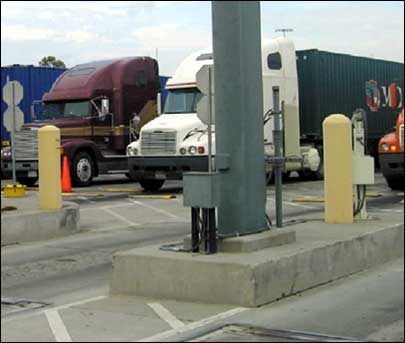
The car-sharing concept began in Switzerland in 1987 and quickly spread worldwide. By 2007, according to statistics compiled by Shaheen, there were 18 U.S. car-sharing programs with 134,094 members sharing 3,637 vehicles. RFID helps make car-sharing practical by providing an authentication mechanism to ensure that only authorized members can slip behind the wheel and drive away.
Germany’s Invers, the largest supplier of RFID-based car-access systems used by car-sharing enterprises, provides a dashboard-mounted computer that manages a vehicle’s locks and ignition system. Once someone reserves a car, identity data is transmitted to the vehicle’s computer via a wireless GSM (Global System for Mobile communications) link. The driver is then given a smart card containing a 125 kHz passive RFID chip, made by NXP Semiconductors, which is read by the vehicle’s computer. After successful identification, the car’s central locking system unlocks, then the customer gets in, retrieves the key from the glove box, starts the car and begins driving.
The car-sharing concept has the potential to exert a dramatic positive impact on the environment. “Data from Europe suggest that there could be as much as a 40 to 50 percent reduction in carbon dioxide emissions—or greenhouse gas emissions—as a result of car-sharing,” Shaheen says. Since car-sharing works to reduce the total number of cars across a given population, the approach also promises to lessen the strain on natural resources used for car production and reduce the number of vehicle components, such as tires and seats, that are dumped into the environment. “It’s a responsible way of driving,” Shaheen says.
Idle Time
The adjoining seaports of Los Angeles and Long Beach are, respectively, the busiest and second-busiest ports in the United States. Like other hectic harbors worldwide, the Southern California ports are constantly crammed with trucks, queued up to collect and discharge cargo. Idling trucks, unfortunately, waste fuel and create choking clouds of air pollution. To expedite trucking operations at the ports, local marine terminal operators created PierPASS, a nonprofit organization with the goal of reducing vehicle congestion and improving air quality, says Bruce Wargo, president and CEO of PierPASS, which is based in Long Beach.
A key part of PierPASS’s strategy for getting trucks in and out of the ports more quickly is the RFID TruckTag system. Since 2006, the organization has purchased more than 16,000 2.4 GHz active tags from WhereNet, an RFID vendor (acquired last year by Zebra Technologies) that specializes in real-time locating systems (RTLSes). PierPASS distributes the tags through eModal, a database company that specializes in tracking trucks and drivers. The free tags, which are mounted on the driver-side rearview mirror, send an identification signal that’s detected upon arrival at any of the terminals’ entry gates. WhereNet RTLS scanning antennas receive the data and relay it to eModal for cross-checking with a database to determine whether the vehicle is authorized to enter.
The TruckTag system speeds a check-in process that was often handled manually in previous years, lowering both idle times and pollution. “The California Air Resources Board has estimated that a truck produces a quarter pound of pollution for every half hour that it’s idling,” Wargo says. “Any step that we can take to speed things up and lower pollution is good.”
Given the ports’ sizes and steadily climbing traffic loads, finding a way to expedite truck movement was essential, Wargo says. The Los Angeles and Long Beach ports combined handle more than 40 percent of the nation’s total import traffic and 24 percent of its total exports. On average, the ports’ marine terminals process more than 180,000 truck deliveries every week. “The port can’t become larger,” Wargo says, “so we have to find ways to move things more efficiently.”
The system went into service in March 2006, and its use became mandatory in December 2007. (Tagless trucks are processed through exception handling, which may include being denied access or temporary authorization via a trouble ticket.) The system produced immediate and impressive results. “It was absolutely clear to everyone that the congestion and the traffic was improved, even on the very first day,” Wargo says. “It’s been that way ever since.”
The RFID technology also bolsters the ports’ security, helping to bring the facilities into compliance with new, stricter federal regulations. In fact, TruckTag was originally conceived as a security initiative. “Things take a strange twist sometimes,” Wargo says. “But TruckTag is working out nicely in support of our overall ‘Clean Truck’ program.”
Trash Talk
Hauling out the recycle bin isn’t much fun, but Scott Lamb would at least like to make the task more profitable. Lamb is chief operations officer of RecycleBank, a Philadelphia-based company that works with municipalities to boost their recycling rates—and lower their landfill costs. The company allows communities to compensate local residents who dutifully recycle their household waste with coupons from more than 300 local and national merchants, including Bed Bath & Beyond, Staples, Starbucks and Whole Foods Market. “By using RFID technology, we’re able to identify how much a household recycles,” Lamb says, “and to reward people for that activity.”
RFID and recycling may sound like an unusual combination, but the technology is fundamental to RecycleBank’s business plan. The company’s system tracks each household’s recycling activity by providing bins embedded with RFID tags that are encoded with a unique serial number; it does not track any household or personally identifiable data. A reader-and-antenna system mounted on the sanitation truck records the weight of each pickup. When a truck finishes its route, it returns to its base, where data is transferred wirelessly to a RecycleBank server. Each household gets an account number, enabling residents to track their recycling points the same as they would airline frequent-flier miles.
Developing a functional system that could withstand the rough-and-tumble life of recycle bins and sanitation trucks wasn’t easy, Lamb admits. RecycleBank first turned to Cascade Engineering to develop and provide a suitable RFID system. Cascade, located in Grand Rapids, Mich., created an ultrahigh-frequency RFID system that RecycleBank adopted for its first deployments.
RecycleBank used the Cascade technology for about a year and a half, but ultimately decided it required something better. “We needed a 99.5 percent or better accuracy on the RFID, and scales that were accurate to within a tenth of a pound,” Lamb says. RecycleBank also wanted a system that worked quickly and unobtrusively to minimize interference with existing collection routines. The Cascade technology fell short of these goals. “Our initial system didn’t meet those criteria,” Lamb says. “Most importantly, it failed on speed.”
So RecycleBank began shopping for another partner and eventually settled on a system assembled by Avery Weigh-Tronix, a Fairmont, Minn.-based scale manufacturer that’s expanding into waste-management technology integration. The tags delivered by Avery to RecycleBank are based on a 30 mm passive Texas Instruments disk transponder R/O. TI also supplies the antenna and reader to Avery. Sanitation truck body manufacturer McNeilus provides the lifters that raise and tip the bins. The scale is provided by Avery itself, as is the system’s software.
RecycleBank launched its service in Philadelphia and area suburbs in 2005. Since then, the company has expanded operations to Wilmington, Del., Burlington, Vt., and several communities in southern New Jersey and central Massachusetts. RecycleBank hopes to double, perhaps even triple, its business during 2008.
Lamb notes that households participating in the program earn an average of $8 per week. RecycleBank charges municipalities a varying rate for its service, depending on the amount of recyclables collected. But the money local governments save on landfill fees more than compensates for the extra cost. In addition, smaller and fewer landfills is a goal that’s appreciated by both residents and municipal officials. “It’s a win-win situation for everybody,” Lamb says. “It’s hard to argue with the outcome.”
Environmental Impact
While RFID promises to help create a cleaner and healthier world, some observers worry that the technology itself has the potential to create an environmental mess. There’s a growing concern that spiraling RFID use will inevitably lead to landfills containing millions of nonbiodegradable RFID tags, all slowly leaking heavy metals and other toxins into the soil. Governments are now beginning to address this possibility.
A pair of European Union directives—the Restriction of Hazardous Substances (RoHS) and the Waste from Electrical and Electronic Equipment (WEEE)—already limit the ability of enterprises to dump tags into landfills. A growing number of U.S. states also are starting to adopt stricter waste and recycling laws.
But advancing technology promises to lead to a new generation of tags that are more durable and easily recyclable, as well as to tags so small—perhaps even speck-sized—that they won’t significantly add to the world’s landfill burden. “Reusable packaging incorporating RFID tags could also lower the amount of waste generated,” says Marsh’s Grackin.
For now, RFID’s impact as a green technology remains relatively low. “You can take all the RFID stuff in the world, and if you could just improve gas mileage by five miles per gallon, you would probably have a much, much larger impact,” says the University of Pittsburgh’s Mickle. But that doesn’t mean RFID won’t be a major force for environmental improvement in the years ahead. “I can’t think of too many technologies that have come along that show any [environmental] promise whatsoever,” he says, “except RFID.”
Sunny Days
Solar power is one environmentally friendly technology that may eventually play a significant role in the operation of future RFID systems. This is already the case in places where conventional power sources are limited or nonexistent and sunlight is abundant.
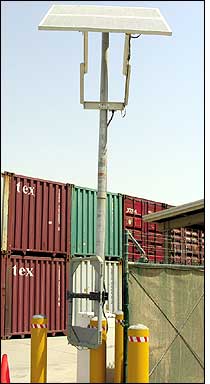
The U.S. Army operates a major supply facility at Camp Arifjan, in a remote and desolate part of Kuwait. Like a growing number of government and commercial distribution centers, the Army facility uses RFID to track freight and capital assets. But unlike most conventional distribution operations, the center had no place to plug in its technology. “Getting adequate power to RFID sites in austere locations has been a challenge,” says Lt. Col. Patrick W. Burden, U.S. Army product manager for Joint-Automatic Identification Technology, the office responsible for the procurement and deployment of RFID systems.
To help it get an RFID system running in one of the world’s more inhospitable locations, the Army turned to Savi Technology. The Mountain View, Calif.-based company offered up a solar-powered RFID system that can operate without the support of electrical mains. “From both an operational and an ecological perspective, it makes a lot of sense,” says David Stephens, CEO of Savi. “You’re not running power lines through the ground and you’re not using other sources of energy, so it becomes a pretty well-thought-out solution.”
The technology is used to track more than 25,000 item tags per day, Burden says. Solar-powered signposts activate battery-powered Savi 433 MHz RFID tags mounted on vehicles and other pieces of equipment. The tags report the assets’ positions to nearby RFID interrogators, also solar-powered, which relay the information to software that tracks and inventories the assets. The overall system consists of 41 interrogators, 56 signposts and 87 solar panels.
The military is keenly interested in expanding its use of solar-powered RFID. A system similar to the Kuwaiti deployment has already been installed in nearby Qatar. “We’re planning to install the identical configuration in Afghanistan, and we’re also evaluating how to use a similar setup in Italy, Japan and Korea,” Burden adds. Stateside, solar RFID systems have been deployed in Fort Bragg, N.C. “It goes without saying,” says Burden, “that installations make the most sense where there’s plenty of sunshine.”
Solar-powered RFID is also beginning to find commercial applications. In Colombia, Savi’s networking unit operates a solar-powered RFID system that tracks cargo shipments managed by Emprevi, a local logistics and security services provider for importers and exporters. The technology supports several remote sections of Emprevi’s RFID system that would otherwise lack a constant and dependable power source.
Overall, solar-powered RFID can provide enterprises with a solid business case for using an environmentally friendly energy source. “Using solar, a renewable energy source, to help power a large infrastructure is a very good way to help the ecology of the planet,” Stephens says. “But you need to make sure the infrastructure you establish solves the business problems you’re trying to accomplish. Solar panels aren’t best if you’re in a spot where it rains three days a week and you need 100 percent reliability.”
How Green Is Your Company?
If your company is developing RFID applications that could help improve the environment, or if it’s using RFID in a green way, we’d like to know. Please send an e-mail to
[email protected] and tell us how. We’ll post your responses on our Web site.
Illustrations by Ken Orvidas


